
How to Use pH Degree Sensor Module: Examples, Pinouts, and Specs
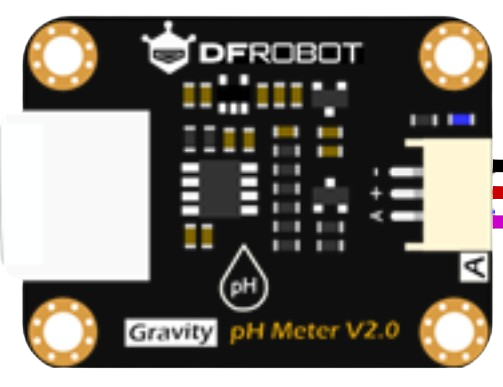
 Design with pH Degree Sensor Module in Cirkit Designer
Design with pH Degree Sensor Module in Cirkit DesignerIntroduction
The pH Degree Sensor Module is an electronic device designed to measure the acidity or alkalinity of a solution, providing a pH reading. pH, which stands for "potential of hydrogen," is a scale used to specify the acidity or basicity of an aqueous solution. The module is widely used in various applications such as chemistry laboratories, environmental monitoring, aquariums, hydroponics, and water quality control.
Explore Projects Built with pH Degree Sensor Module
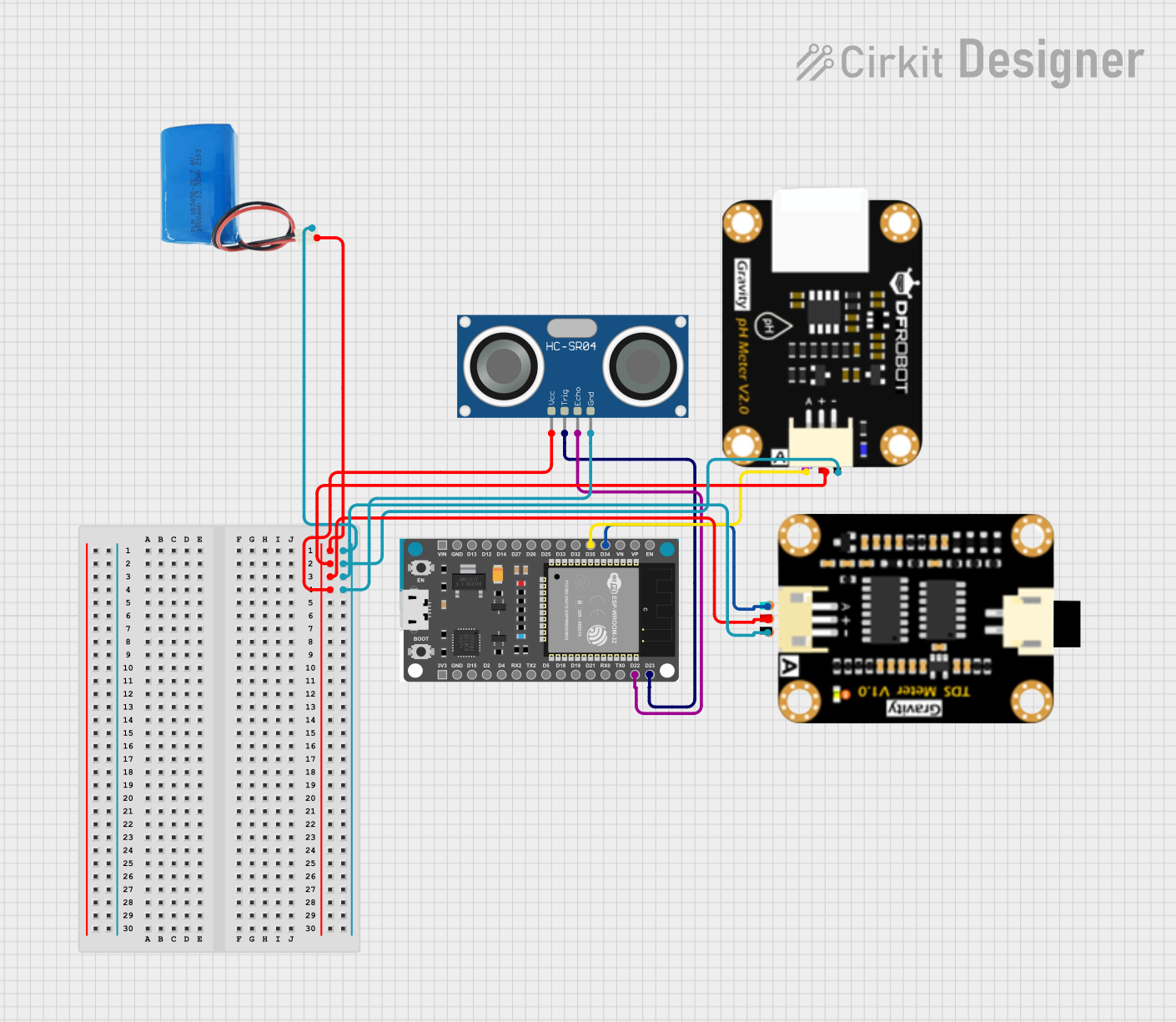
 Open Project in Cirkit Designer
Open Project in Cirkit Designer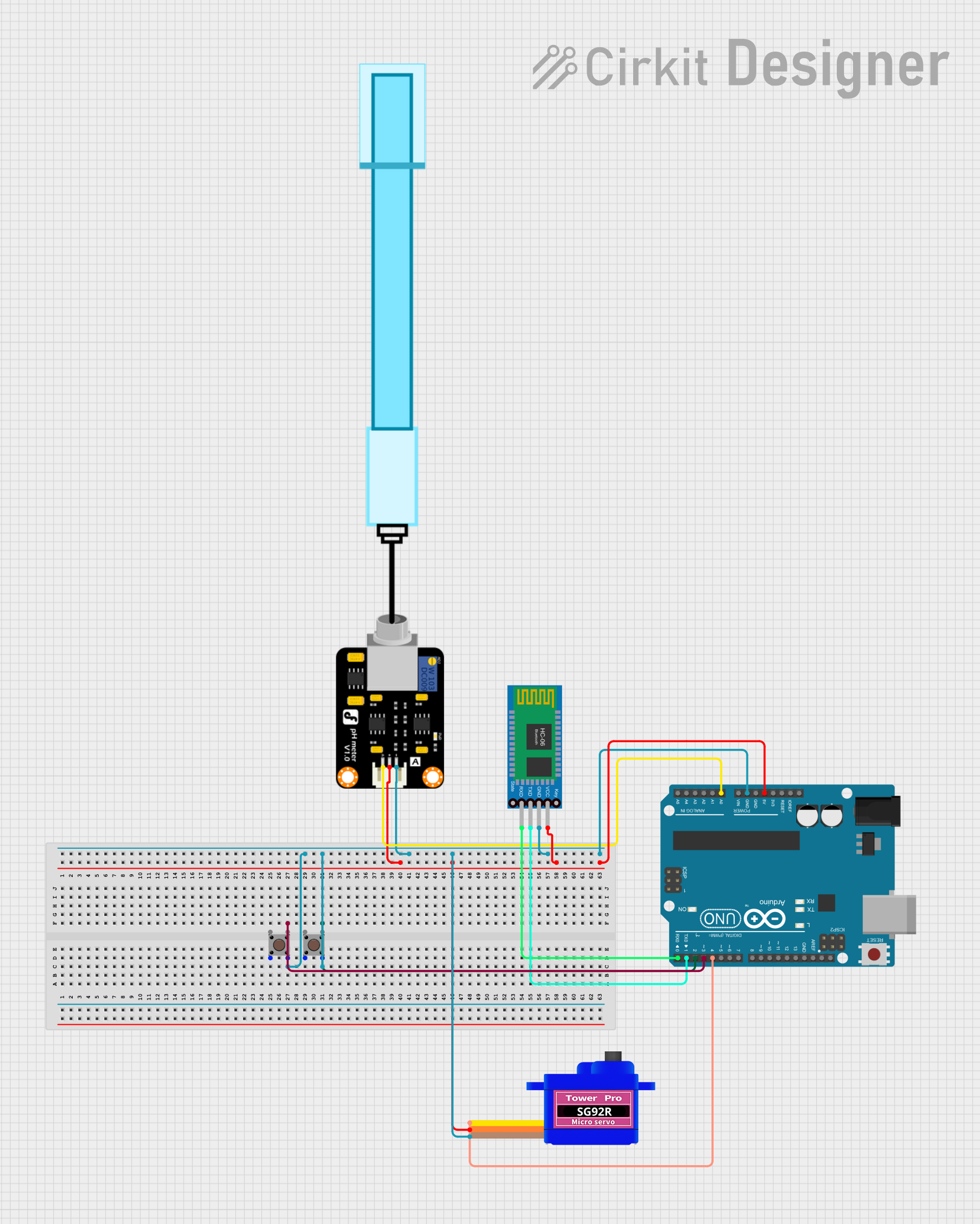
 Open Project in Cirkit Designer
Open Project in Cirkit Designer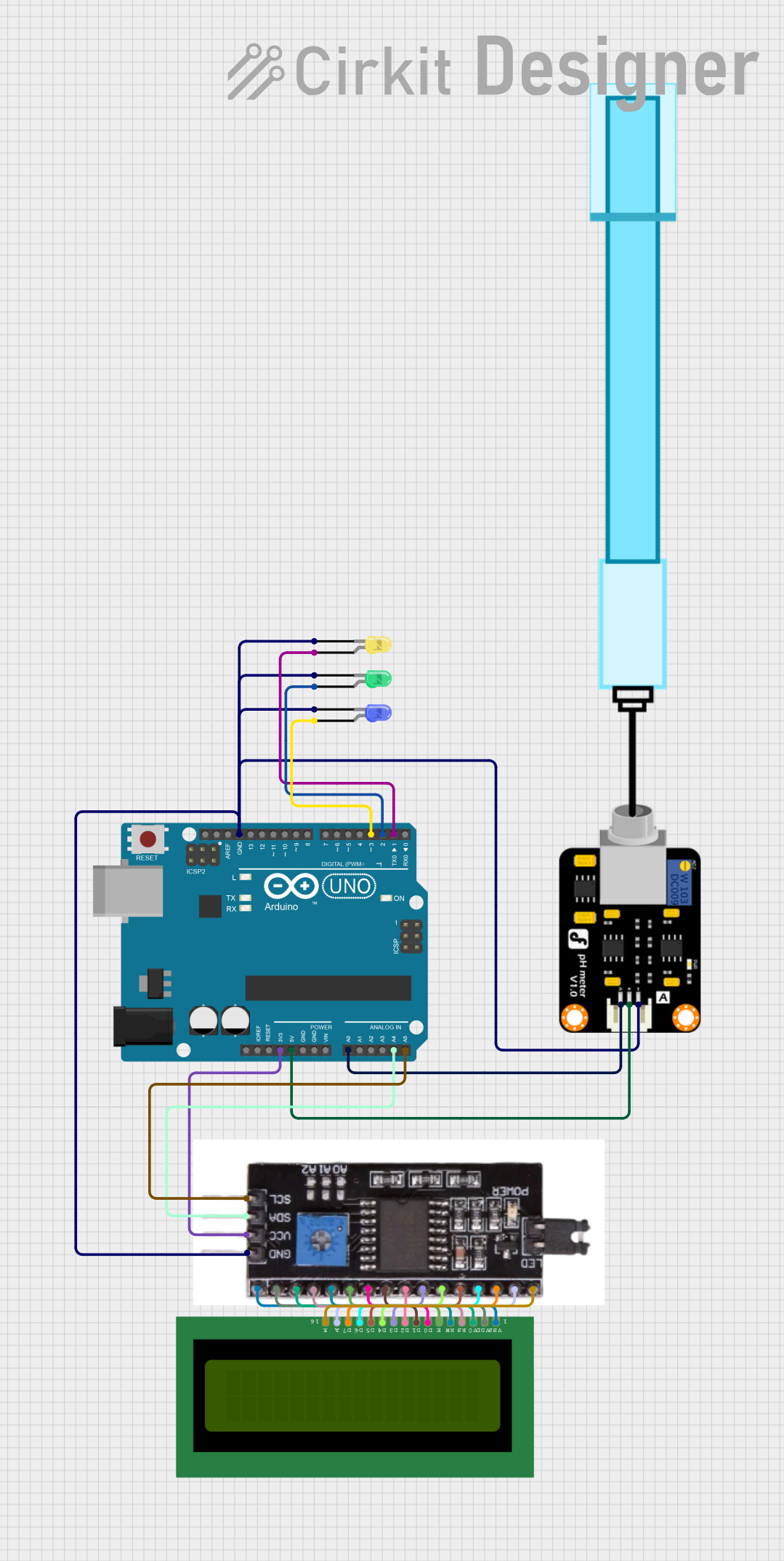
 Open Project in Cirkit Designer
Open Project in Cirkit Designer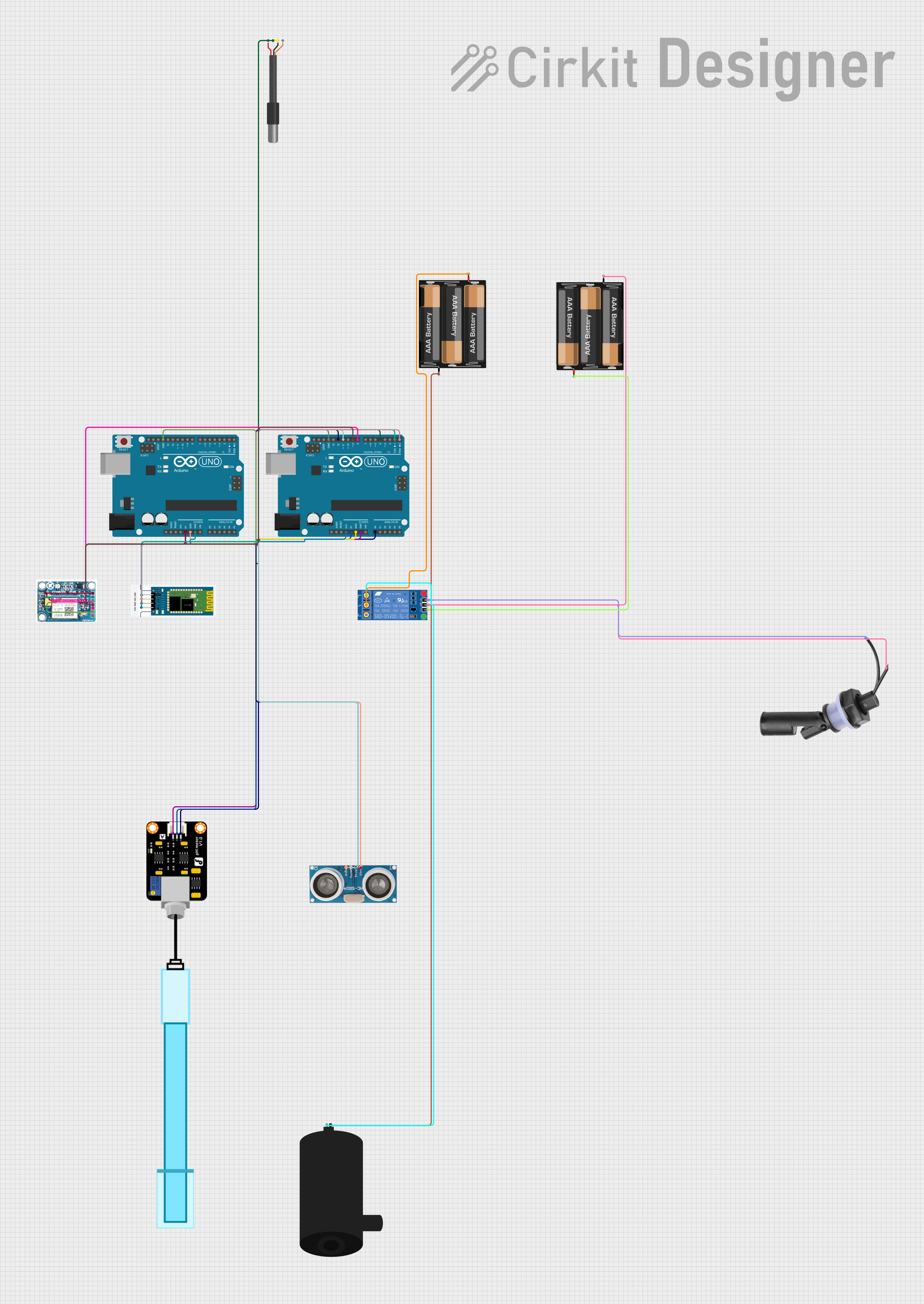
 Open Project in Cirkit Designer
Open Project in Cirkit DesignerExplore Projects Built with pH Degree Sensor Module

 Open Project in Cirkit Designer
Open Project in Cirkit Designer
 Open Project in Cirkit Designer
Open Project in Cirkit Designer
 Open Project in Cirkit Designer
Open Project in Cirkit Designer
 Open Project in Cirkit Designer
Open Project in Cirkit DesignerTechnical Specifications
Key Technical Details
- Measurement Range: 0-14 pH
- Resolution: 0.01 pH
- Accuracy: ±0.1 pH
- Response Time: <1 minute
- Operating Temperature: 0°C to 60°C
- Supply Voltage: 3.3V to 5V DC
- Output: Analog voltage proportional to pH value
Pin Configuration and Descriptions
| Pin Number | Pin Name | Description |
|---|---|---|
| 1 | V+ | Power supply (3.3V to 5V DC) |
| 2 | GND | Ground |
| 3 | Po | Analog pH value output |
| 4 | To | Temperature output (if supported) |
| 5 | Do | Digital output (if supported) |
Usage Instructions
Integration with a Circuit
- Power Connection: Connect the V+ pin to a 3.3V or 5V power supply and the GND pin to the ground of your system.
- Signal Output: Connect the Po pin to an analog input on your microcontroller to read the pH value.
- Temperature Compensation (Optional): If the module includes a temperature sensor (To pin), connect it to another analog input for accurate pH readings at different temperatures.
- Digital Output (Optional): The Do pin can be used for a threshold-triggered digital signal if the module supports this feature.
Calibration
Before using the pH sensor, it is crucial to calibrate it with standard buffer solutions (usually pH 4.00, pH 7.00, and pH 10.00). Follow the calibration procedure outlined in the manufacturer's manual.
Best Practices
- Always rinse the sensor with distilled water before and after immersing it in a solution.
- Store the sensor in a proper storage solution when not in use to prevent drying out.
- Avoid touching the sensing part of the probe to prevent contamination and damage.
Example Code for Arduino UNO
// pH Degree Sensor Module Example Code for Arduino UNO
const int pH_Pin = A0; // Connect Po pin to Analog pin A0
float pH_Value;
float calibration_factor = 0.00; // Adjust this value based on calibration
void setup() {
Serial.begin(9600);
}
void loop() {
int sensorValue = analogRead(pH_Pin);
pH_Value = (sensorValue * 5.0 / 1024) * 3.5; // Convert analog reading to pH value
pH_Value += calibration_factor; // Apply calibration factor
Serial.print("pH Value: ");
Serial.println(pH_Value, 2); // Print pH value with two decimal places
delay(1000); // Wait for 1 second before the next reading
}
Troubleshooting and FAQs
Common Issues
- Inaccurate Readings: Ensure the sensor is calibrated correctly. Drift over time is normal; recalibrate periodically.
- No Readings: Check the power supply and connections. Ensure the sensor is not damaged.
- Erratic Readings: Ensure there is no electrical interference. Use shielded cables if necessary.
FAQs
Q: How often should I calibrate the pH sensor? A: Calibration frequency depends on usage, but typically once a month is recommended, or whenever you suspect inaccurate readings.
Q: Can the pH sensor be used in non-aqueous solutions? A: The pH sensor is designed for aqueous solutions. Using it in non-aqueous solutions may damage the sensor or produce unreliable readings.
Q: What is the lifespan of the pH sensor? A: With proper maintenance and storage, the pH sensor can last about 1 to 2 years, depending on the frequency of use and the nature of the solutions it is exposed to.
Q: How do I clean the pH sensor? A: Rinse the sensor with distilled water. For stubborn contaminants, use a mild detergent and a soft brush, then rinse thoroughly with distilled water.
For further assistance, consult the manufacturer's documentation or contact technical support.